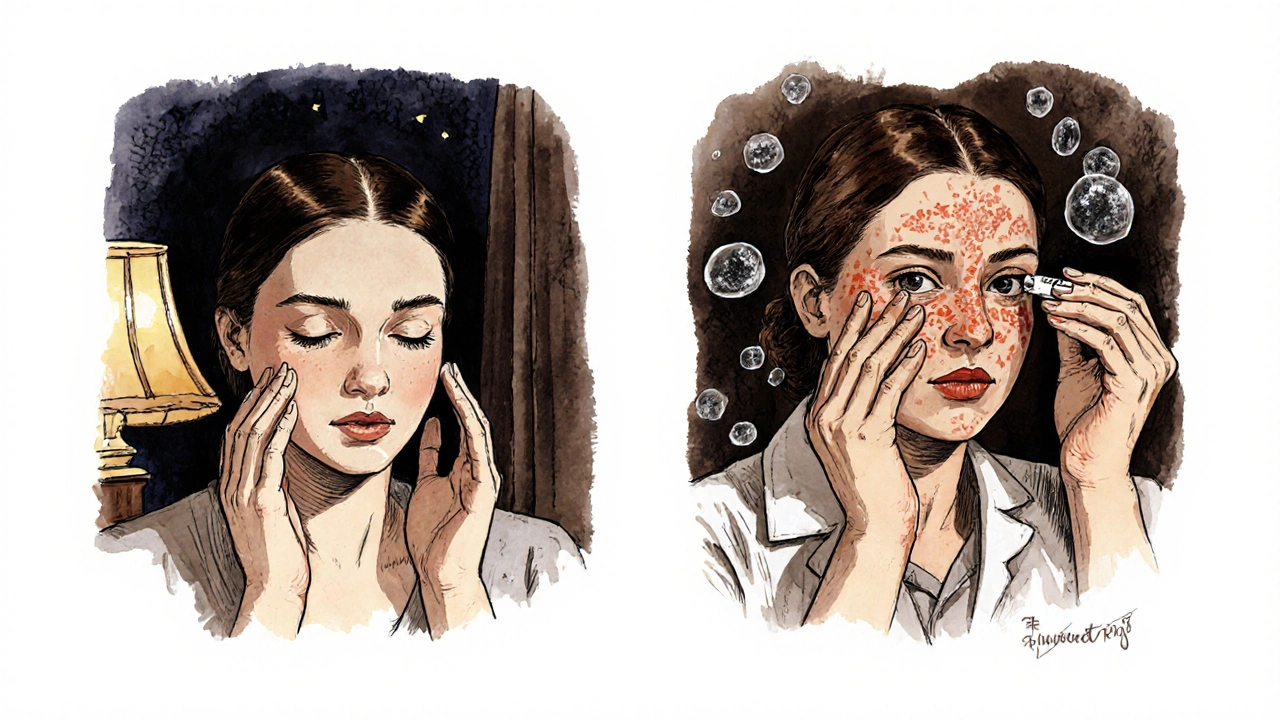Acne can feel stubborn, but small changes usually make the biggest difference fast. This page explains what works now: easy over-the-counter steps, prescription choices your dermatologist might recommend, and safe ways to get meds online without risking fake pills. No fluff — just what to try and when to see a pro.
Start with basics: benzoyl peroxide (2.5–10%) fights bacteria and unclogs pores. Use it once daily at first to avoid irritation, then increase to twice daily if your skin tolerates it. Salicylic acid helps exfoliate and prevents blocked pores — look for 0.5–2% cleansers or leave-on gels. Adapalene (a topical retinoid) is now available OTC and works well for comedones and mild inflammatory acne; expect 6–12 weeks to see real improvement.
If your skin gets dry, use a simple moisturizer labeled "non-comedogenic." Don’t over-wash — twice a day is enough. Avoid harsh scrubs and pore strips; they can make inflammation worse.
For moderate to severe acne, doctors often prescribe topical antibiotics combined with retinoids or benzoyl peroxide, or oral antibiotics like doxycycline and minocycline (both are tetracycline family drugs). These reduce inflammation and bacteria but should be used short-term to limit resistance. There’s growing interest in older antibiotics like tetracycline for specific infections; your doctor will choose what fits your case best.
Isotretinoin is the strongest option and can clear severe, scarring acne. It needs close monitoring for side effects. For people with hormonal acne, combined birth control pills (like Levlen) or spironolactone often help by lowering androgen effects on the skin. If you’re thinking about birth control for acne, read reputable guides and talk to your clinician before buying online — many resources explain safe ways to order medications.
Worried about antibiotic resistance or side effects? Ask your provider about limits on duration, possible alternatives, and non-antibiotic options. If topical treatments irritate your skin, stop and check with a dermatologist.
Quick practical checklist: 1) Start with benzoyl peroxide or adapalene. 2) Add salicylic acid for clogged pores. 3) Use moisturizer and sunscreen daily. 4) See a clinician if acne is widespread, painful, or leaving scars. 5) Discuss hormonal tests or prescription options if OTC methods fail.
Want reliable reading? Look for posts about tetracycline for infections, safe online pharmacies, and birth control options — those resources help you understand antibiotics, buying meds safely, and hormonal choices. If you’re unsure, a short visit to a dermatologist saves weeks of trial-and-error and prevents scars.
If you have questions about a specific medication or need help finding a trusted source online, this hub has guides and reviews to point you in the right direction. Good treatment is a combination of the right product, consistent routine, and sensible medical advice.

